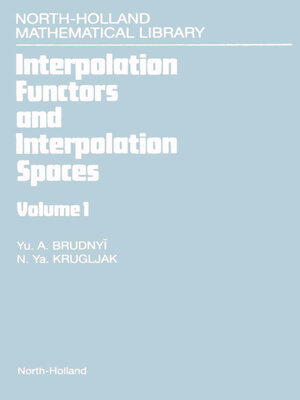Interpolation Functors and Interpolation Spaces
ebook ∣ North-Holland Mathematical Library
By Yu.A. Brudnyi

Sign up to save your library
With an OverDrive account, you can save your favorite libraries for at-a-glance information about availability. Find out more about OverDrive accounts.
Find this title in Libby, the library reading app by OverDrive.



Search for a digital library with this title
Title found at these libraries:
| Library Name | Distance |
|---|---|
| Loading... |
The theory of interpolation spaces has its origin in the classical work of Riesz and Marcinkiewicz but had its first flowering in the years around 1960 with the pioneering work of Aronszajn, Calderón, Gagliardo, Krein, Lions and a few others. It is interesting to note that what originally triggered off this avalanche were concrete problems in the theory of elliptic boundary value problems related to the scale of Sobolev spaces. Later on, applications were found in many other areas of mathematics: harmonic analysis, approximation theory, theoretical numerical analysis, geometry of Banach spaces, nonlinear functional analysis, etc. Besides this the theory has a considerable internal beauty and must by now be regarded as an independent branch of analysis, with its own problems and methods. Further development in the 1970s and 1980s included the solution by the authors of this book of one of the outstanding questions in the theory of the real method, the K-divisibility problem. In a way, this book harvests the results of that solution, as well as drawing heavily on a classic paper by Aronszajn and Gagliardo, which appeared in 1965 but whose real importance was not realized until a decade later. This includes a systematic use of the language, if not the theory, of categories. In this way the book also opens up many new vistas which still have to be explored. This volume is the first of three planned books. Volume II will deal with the complex method, while Volume III will deal with applications.







